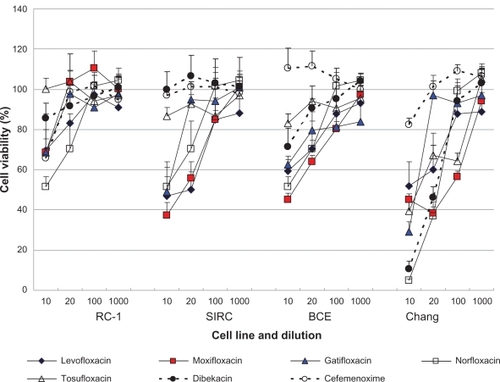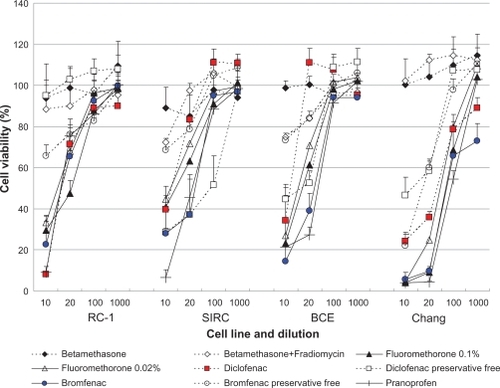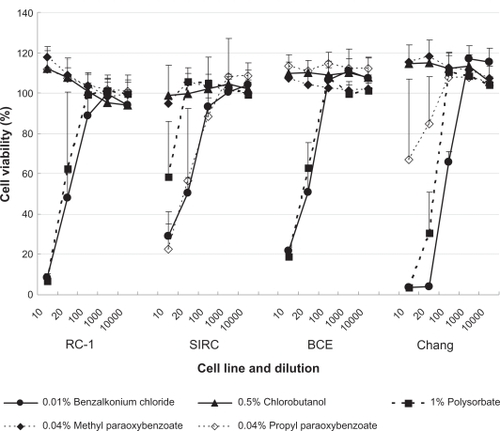Figures & data
Table 1 Antibiotic ophthalmic solutions evaluated in the present study
Figure 1 Effects of antibiotic ophthalmic solutions on the viability of cultured rabbit corneal epithelial cells (RC-1 and SIRC), bovine corneal epithelial cells (BCE), and human conjunctival cells (Chang) after 48 h exposure. Data are the mean ± SD. Cefmenoxime was the least toxic. The cell viability score was determined and the order of cell viability was cefmenoxime ≥ tosufloxicin ≥ dibekacin ≥ levofloxacin ≥ norfloxacin = gatifloxacin = moxifloxacin ().

Figure 2 Effects of anti-inflammatory ophthalmic solutions on the viability of cultured rabbit corneal epithelial cells (RC-1 and SIRC), bovine corneal epithelial cells (BCE), and human conjunctival cells (Chang) after 48 h exposure. Data are the mean ± SD. Data for benzalkonium chloride (BAK)-free drugs are indicated by the dotted lines. Cell viability was greater in all BAK-free solutions, except for Diclod, compared with solutions containing BAK. The cell viability score was determined and the order of viability was betamethasone ≥ betamethasone + fradiomycin > preservative-free diclofenac ≥ preservative-free bromfenac >> 0.02% fluoromethorone ≥ 0.1% fluoromethorone = diclofenac + preservative (Diclod) = bromfenac + preservative (Bronuck) = pranoprofen.

Table 2 Anti-inflammatory ophthalmic solutions evaluated in the present study
Figure 3 Effects of preservatives on the viability of cultured rabbit corneal epithelial cells (RC-1 and SIRC), bovine corneal epithelial cells (BCE), and human conjunctival cells (Chang) after 48 h exposure. Data are the mean ± SD. Benzalkonium chloride and polysorbate were shown to have dose-dependent cytotoxic effects.
